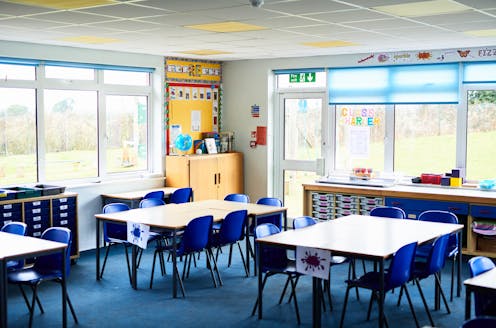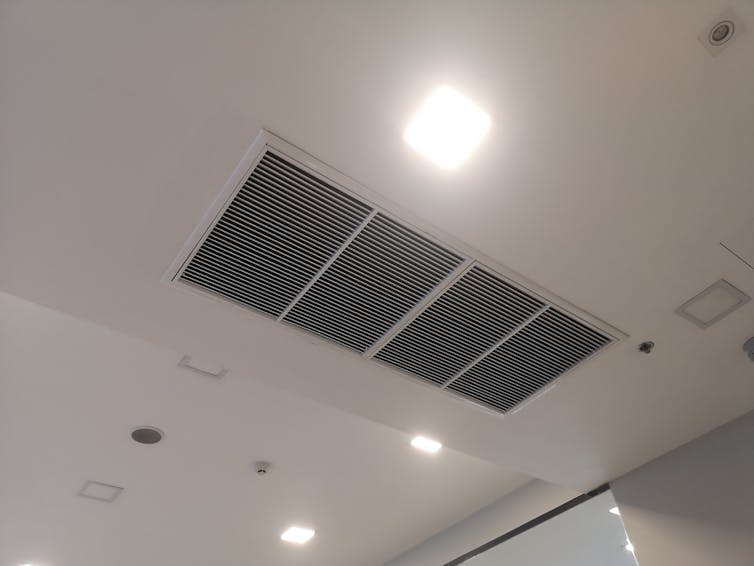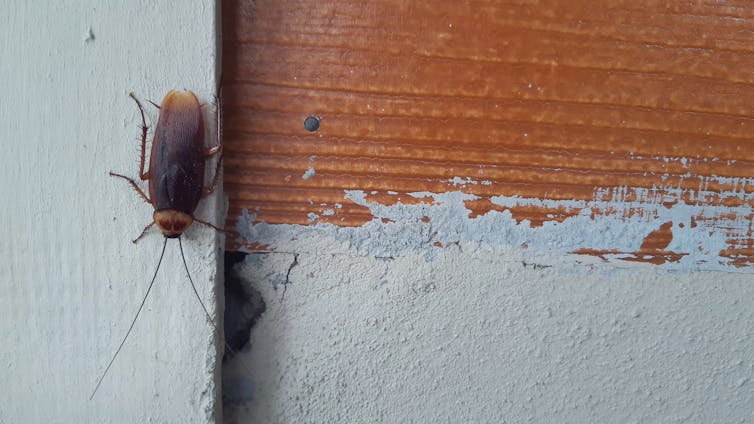
Parents send their children to school to learn, and they don’t want to worry about whether the air is clean, whether there are insect problems or whether the school’s cleaning supplies could cause an asthma attack.
But a research collaborative, of which I’m a member, has found that schools might not be ready to protect students from environmental contaminants.
I’m an extension specialist focused on pest management. I’m working with a cross-disciplinary team to improve compliance with environmental health standards, and we’ve found that schools across the nation need updates in order to meet minimum code requirements.
Everything from a school’s air and water quality to the safety of the pesticides and cleaning chemicals used there determine the safety of the learning environment. Environmental health standards can help a school community ensure each potential hazard is accounted for.
Air, water and food quality
So, what aspects of the school environment and student health need attention? For one, the air students and teachers breathe every day.
Understanding and controlling common pollutants indoors can improve the indoor air quality and reduce the risk of health concerns. Even small things like dust and dander, dead insects and artificial scents used to cover up smells like mold and mildew can trigger asthma and allergies.
Improving ventilation, as well as a school’s air flow and filtration, can help protect building occupants from respiratory infections and maintain a healthy indoor environment. Ventilation systems bring fresh, outdoor air into rooms, filter or disinfect the air in the room and improve how often air flows in and out of a room.
Upgrading ventilation in school buildings can improve air quality and reduce potential contaminants, including viral particles, in indoor spaces.

It may seem like maintaining proper food safety and drinking-water quality would be common practices. But many schools do have some level of lead contamination in their food and water.
In 1991, the U.S. Environmental Protection Agency published a regulation, known as the lead and copper rule, to minimize lead and copper in drinking water. The EPA’s 2021 revised lead and copper rule aims to reduce the risks of childhood lead exposure by focusing on schools and child care facilities and conducting outreach.
But in December 2022, a team of scientists published a report on lead and copper levels in drinking water, and they found evidence that lead is still showing up in drinking water in Massachusetts schools. No amount of lead is safe to have in the water.
To combat contamination and ensure safe food and water, the Food and Drug Administration overhauled the Food Safety Modernization Act in 2016. This act has transformed the nation’s food safety system by shifting the focus from responding to foodborne illnesses to preventing them. It gives local health officials more authority to oversee and enforce supply chain safety.
Per these new regulations, every school cafeteria must be inspected by the local registered sanitarian at least twice a year to meet the minimum standards for their state and federal guidelines.
These inspections now include looking for entry points that might allow mice or rats to come in, finding areas with moisture buildup where flies, roaches or other insects can breed, and determining whether storage rooms are properly sanitized.
Integrated pest management
Even if a school has clean air, water and food, it still may not meet all the required health standards. Many schools have insect infestations, and many combat these pest problems with harsh chemicals when there’s a simpler solution.
Integrated pest management is an environmentally sensitive approach to pest management. Known as IPM, it combines commonsense practices like keeping doors and windows closed and making sure no food is left in classrooms overnight with other ways to help prevent pests from coming in.
IPM programs consider the pests’ life cycles and their larger environment, as well as all the available pest control methods, to manage pest infestations economically and scientifically.
Common pests in schools include ants, cockroaches and bedbugs. Ants enter looking for food, and cockroaches can travel in with backpacks or enter through small openings under doors or cracks in the seals around a window. Mice, cockroaches and ants can come into a kitchen or bathroom from plumbing pipes that aren’t properly sealed.

In the fall, cockroaches reside in custodial closets, kitchens and other areas where floor drains might be. These bugs use the sewer drains to move about, so an IPM approach might include making sure the drains have plenty of water flooding through them and clearing out organic matter that the cockroaches might feed on.
Green cleaning
School administrators also determine what products to use for pest control and cleaning. With the intent to prioritize the safety of both the people inside the building and the environment, some schools have adopted a “green cleaning” approach.
Green cleaning uses safer – or less harsh – chemical and pesticide products, since studies have found that the repeated use of harsh chemicals indoors can lead to chronic health effects later in life for anyone directly exposed.
Products that contain ingredients like hydrogen peroxide, citric acid and isopropyl alcohol are generally safer than products that contain chlorine or ammonia.
But the school’s job isn’t done, even after the infestation has been dealt with. Schools need a plan to manage their pollutants long term – these pollutants might be cleaning chemicals and pesticides or chemicals used in science classes. Preserving the school’s air quality requires a plan for storage and disposal of these materials. But finding the funds to correctly dispose of legacy chemicals can challenge already thin budgets.
Over the past decade, the U.S. Centers for Disease Control and Prevention has worked with a variety of groups to develop the Whole School, Whole Community, Whole Child initiative. This approach pulls together professionals, community leaders, parents and others to support evidence-based policies and practices.
The initiative has also led some states to develop school health advisory councils that work with state departments of education and health to assist their local school districts with managing the indoor environment and student health.
When the school building is safe, students and educators are more able to get down to the business of learning, undistracted.
Janet Hurley does not work for, consult, own shares in or receive funding from any company or organisation that would benefit from this article, and has disclosed no relevant affiliations beyond their academic appointment.
This article was originally published on The Conversation. Read the original article.







